Chestnut Oak Tree
- November 25, 2024
- 0 comment
The Chestnut Oak Tree, scientifically known as Quercus prinus, is a vital component of temperate forest ecosystems in North America.
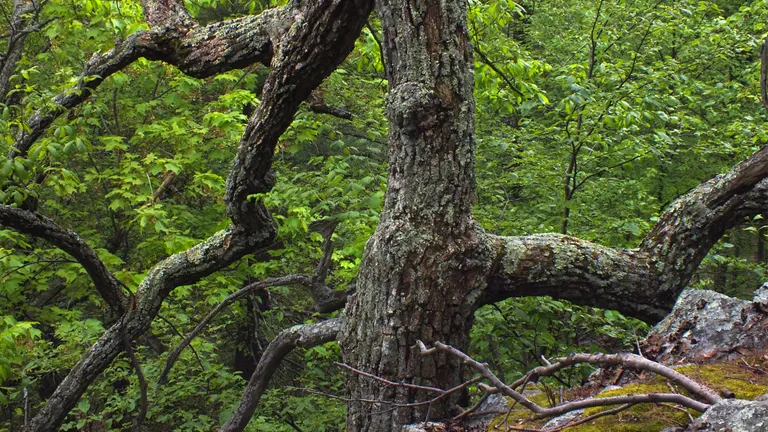
This majestic oak plays a crucial role in supporting biodiversity, stabilizing soil, and providing shelter and food for countless species. As a member of the Fagaceae family, it is a keystone species, underscoring its importance in maintaining healthy ecosystems.
What Is a Chestnut Oak Tree?
The Chestnut Oak Tree is a deciduous tree commonly found in rocky, upland areas of eastern North America. Its scientific classification places it in the genus Quercus, known for its hardwood species. Key characteristics include:
- Leaves: Broad, oblong, and scalloped edges resembling chestnut leaves, hence the name.
- Bark: Thick and ridged, with a dark grayish-brown color that serves as a defense against forest fires.
- Acorns: Large and nutritious, providing an essential food source for wildlife like squirrels, deer, and birds.
- Lifespan: Typically, the Chestnut Oak can live for 300–400 years, making it a symbol of longevity in forested landscapes.
Interesting Fact: The tree’s bark is high in tannins, historically used in leather tanning processes.
Two Different Types of Chestnut Oak Tree Species
The Chestnut Oak Tree primarily refers to Quercus prinus, but other related species add diversity to this oak group.
Quercus Montana
Sometimes synonymous with Quercus prinus, this species thrives in mountainous regions and shares similar characteristics.
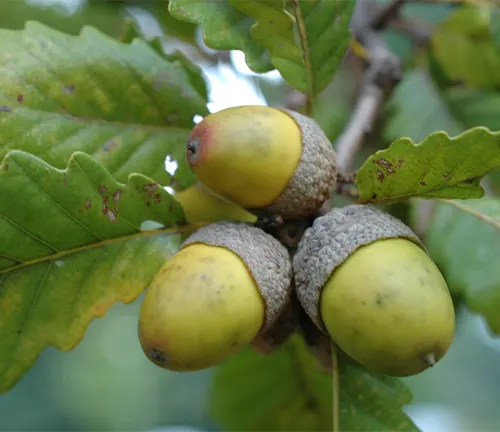

Quercus Michauxii (Swamp Chestnut Oak)
A related species that prefers moist, lowland areas with more fertile soils.
These species vary slightly in size and habitat, with the Swamp Chestnut Oak growing larger due to its favorable conditions. All Chestnut Oaks play a critical role in their ecosystems by stabilizing soils and enriching them with organic matter from their fallen leaves.
Where Do Chestnut Oak Trees Grow?
The Chestnut Oak Tree is native to the eastern United States, thriving in states like Pennsylvania, Virginia, and North Carolina.
- Natural Habitats: Rocky ridges, dry uplands, and poor, acidic soils.
- Climate Adaptability: These trees are well-adapted to temperate climates, withstanding drought and rocky terrain due to their deep root systems.
- Ecological Role: Chestnut Oaks stabilize slopes and prevent erosion, while their acorns support local wildlife populations.
How to Grow and Care for Chestnut Oak Trees
Growing a Chestnut Oak Tree requires careful attention to its natural preferences:

- Soil: Prefers well-drained, rocky, or sandy soils with acidic pH.
- Sunlight: Thrives in full sunlight but can tolerate partial shade.
- Water Needs: Requires moderate watering, though established trees are drought-resistant.
Chestnut Oaks are typically grown from acorns, which should be collected in the fall and planted immediately or stored in a cool, moist environment for later planting.
Ecological Benefits of Chestnut Oak Trees
The Chestnut Oak Tree is a cornerstone species, supporting its ecosystem in numerous ways:
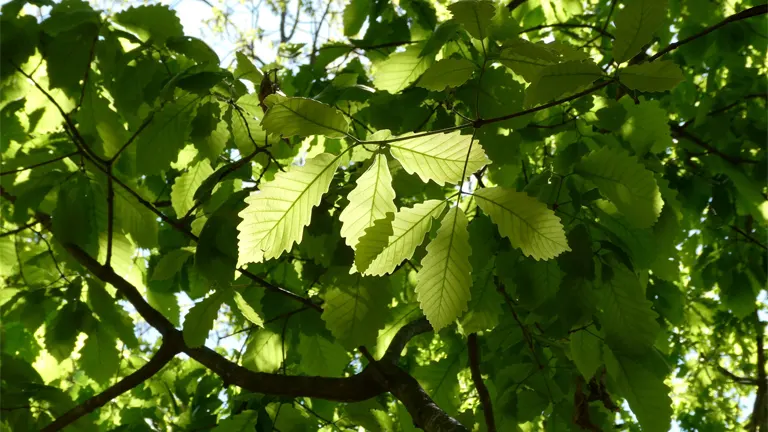
- Soil Quality: Fallen leaves and organic matter enrich the soil, aiding nearby plants.
- Erosion Control: Its roots stabilize soil on rocky slopes, preventing erosion.
- Wildlife Support: Acorns provide a rich source of energy for animals like deer, bears, and wild turkeys.
Chestnut Oak Tree Flowering and Pollination
The Chestnut Oak Tree produces small, inconspicuous flowers in spring, with male flowers forming long catkins and female flowers growing near leaf axils. As a wind-pollinated species, it ensures genetic diversity in nearby oak populations. Its acorns attract wildlife, aiding seed dispersal and tree propagation.
Is the Chestnut Oak Tree Drought-Tolerant?
Yes, the Chestnut Oak Tree is highly drought-tolerant, thanks to its deep roots that access underground water. This resilience makes it an excellent species for dry or rocky regions.
Chestnut Oak Tree and Wildlife Interactions
The Chestnut Oak Tree plays a vital role in its ecosystem by providing acorns as a food source for mammals and birds. Its dense branches offer shelter for wildlife, while its roots form symbiotic relationships with fungi, enhancing soil health and nutrient uptake.
Conclusions
The Chestnut Oak Tree (Quercus prinus) is an ecological powerhouse, fostering biodiversity, preventing erosion, and enriching soil quality. Its significance extends to its role in supporting wildlife, contributing to ecosystem stability, and serving as a reminder of the enduring beauty and resilience of nature. Protecting and cultivating these trees is essential for maintaining the health of our forests and the planet.
Frequently Asked Questions (FAQs)
- What is the Chestnut Oak Tree?
The Chestnut Oak Tree, scientifically known as Quercus prinus, is a deciduous tree native to eastern North America. It features scalloped leaves, thick bark, and acorns that are vital for wildlife. - Where do Chestnut Oak Trees grow?
They thrive in rocky, upland areas with well-drained, acidic soils and are found in states like Pennsylvania, Virginia, and North Carolina. - How do Chestnut Oak Trees benefit the environment?
They prevent soil erosion, enrich soil with organic matter, and support wildlife by providing food (acorns) and shelter. - Can Chestnut Oak Trees tolerate drought?
Yes, their deep root systems make them highly drought-tolerant, allowing them to survive in dry and rocky conditions. - How can I grow a Chestnut Oak Tree?
Plant acorns in well-drained, acidic soil with full sunlight. Water moderately and maintain the tree by pruning dead branches and protecting it from pests. - What role do Chestnut Oak Trees play in ecosystems?
They stabilize slopes, improve soil quality, and support biodiversity by providing habitat and food for various animals and insects.
We hope this guide has shed light on the importance of the Chestnut Oak Tree (Quercus prinus). Share your thoughts or experiences below to inspire others and promote forest conservation. Don’t forget to share this guide with those who care about preserving our natural world!




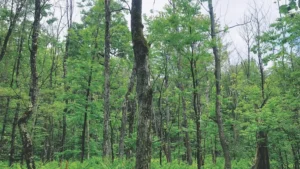
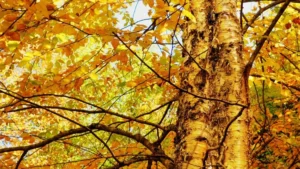

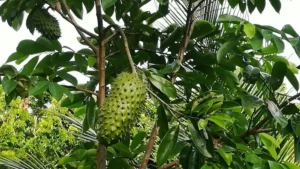

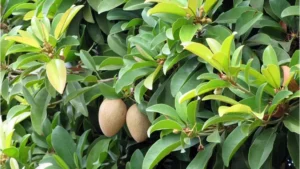
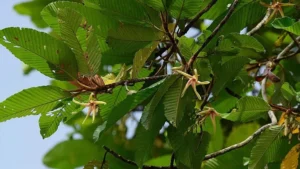
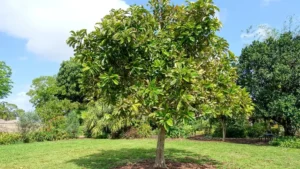
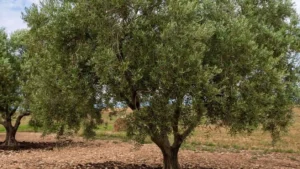
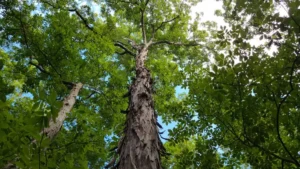
Leave your comment